
推广DAO理念,并帮助更多的人投入价值创造实践
A new cryptocurrency, as old as civilization
Word Count: 2333
Author: Paul d'Aoust
Translators: Li Yi & Frau Yang & Jiang Nan
Translation agency: DAOSquare
There has been a lot of news about cryptocurrencies and distributed ledgers over the past few years. From the beginning of Bitcoin's rise to fame as a "digital gold" that is not controlled by a central authority, to the rapid rise of new projects such as Ethereum, Ripple, and IOTA in the past decade, we can see the technology community's interest in encryption technology. needs are far from being met.
But as with any hype cycle, those highlights eventually fade away. Die-hard crypto fans continue to believe, but everyone else is starting to tire of it. So why am I choosing now to talk about a "new" cryptocurrency?
In just six months, the old world we knew was gone, and a strange new world took its place. The ravages of COVID-19 have shaken socioeconomic systems, exposing their fragility and dysfunction in the form of economic recession, systemic injustice, ecological degradation, cascading institutional failures, and political chaos. As more and more voices emerge, I believe the way we design money and the way they shape our economy has caused or accelerated many of the problems above.
Crypto advocates are the drummers in this current of thought, but they are not the only voices, and certainly not the first. Decentralized digital gold is an interesting idea, but I think it's just a small adjustment to the current broken monetary system. (This also creates new problems.)
Read on and you'll see a completely different, but very old, method of making money.
Well, tell me about "mutual credit".
Not yet! First, I want to unravel the history of mankind over the past few thousand years. I promise it won't take long.
From the tribal gift economy to the global capitalist market, the peoples of the world have taken many different paths, but the two most popular narratives are as follows.
Story 1: From Gifts to Bargain to Metal Currency
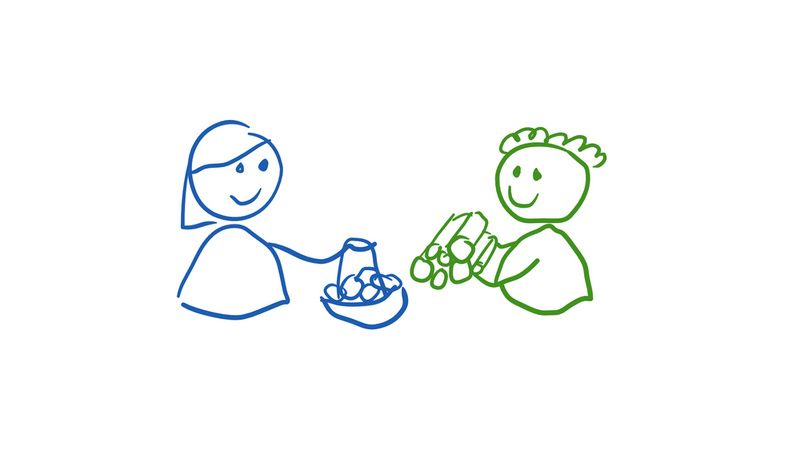
Economists like Adam Smith tell us a standard story: As we became more civilized, we began to barter for the goods we needed.

This doesn't always work when Alice has eggs and wants firewood, but Bob wants eggs and has blankets. So we turned to regulating our transactions with things that were universally needed—for example, grains at first, and nuggets at the end. All kinds of services have sprung up—like barns, banks, that offer you a service to store your wealth for a fee.

But hard currency has its own problems. First, you can only spend what you actually have. So we moved away from using hard money and turned to "commitments" - a form of debt. Banks step in again to reconcile these commitments, providing immediate funding to sellers and loans (with interest) to buyers. Everyone now gets more money, which led to the economic boom of the 19th and 20th centuries. Now, in the 21st century, banks are the masters of money management, making the most important decisions about the quantity of money, its issuance, and its price. Some said it was a good idea (mostly banks), others said it was an absolute mess.
Story Two: From Gifts to Promises, then Metal Currency
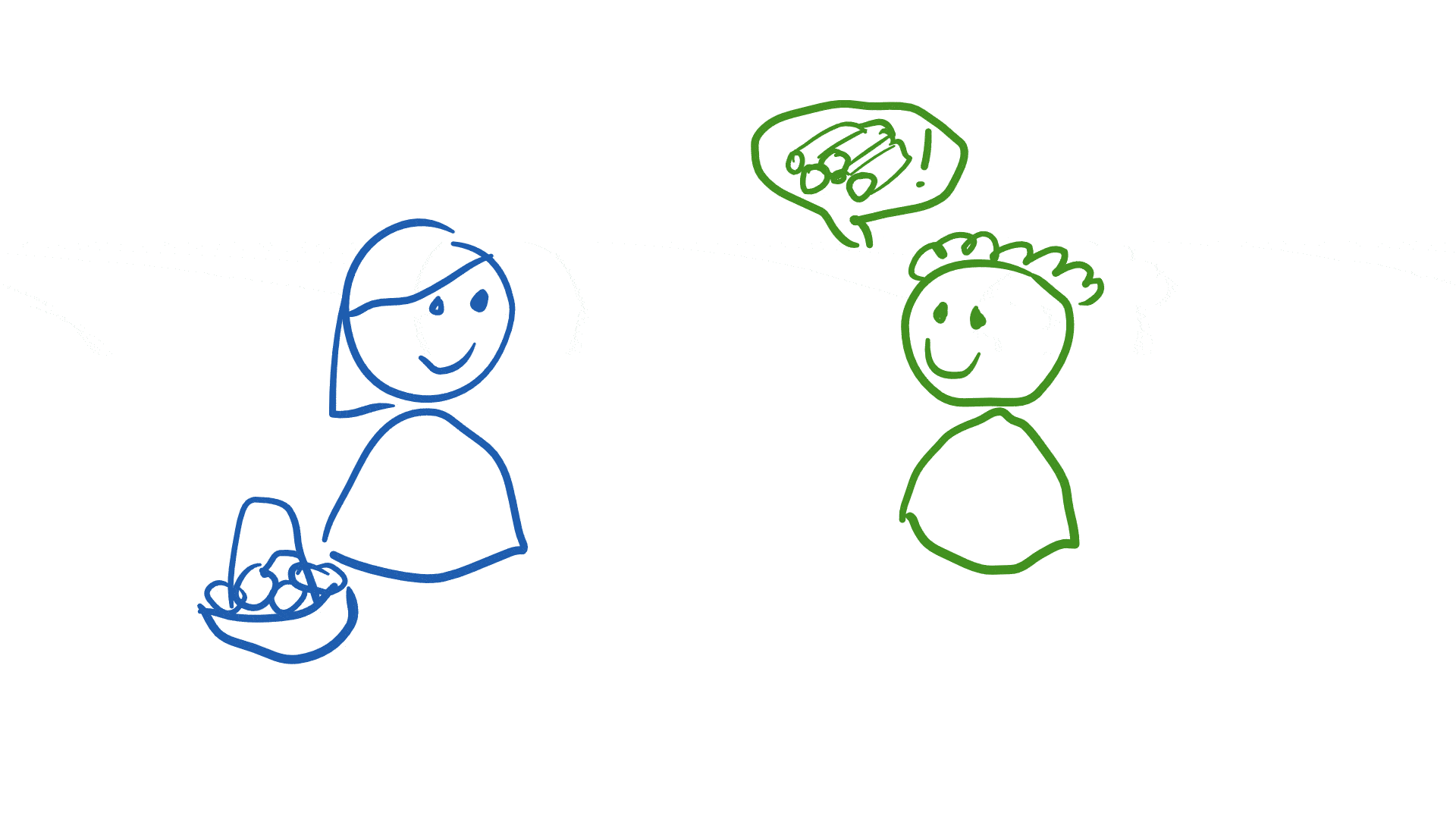
Anthropologists like David Graeber say that Story 1 is turned upside down. They claim that, as society developed, humans used IOUs, rather than seeds, shells, and silver, as their first currency. In other words, if Bob wants eggs but doesn't have firewood yet, he will politely ask Alice for them and promise to find a tree, cut it down and return it to her.
Later, money emerged as a way to pay debts that could not be paid by settling IOUs. Maybe the debt is just symbolic (like tithes and dowries paid to the church), or because the two sides are too far apart (like international trade). This form of money is especially popular with states and state-backed religions, who use it to pay for projects and wars and then expect to get it back in the form of taxes and tributes at a later date. It was not considered until later that it was also a universal unit of exchange.
Since then, the story has evolved as the standard story has followed; metals are slowly being replaced by bank-issued credit. See above: confusion.
Where are we now
I'm not smart enough to know which story is the truest. I have a feeling that none of the experts have experienced the scene 5,000 years ago, so they don't know either. But what I find interesting is that they agree on the following points:
- The gift economy works well for small groups.
- As groups grew in size and trust networks became thinner, we began to create currency in lieu of relationships.
- Credit/debt/IOU all play an important role in an economy, no matter what other currency is used.
- Money is often used as a tool to centralize power and concentrate wealth in fewer and fewer hands.
Well, now can we talk about your mutual credit?
Row!
Let's go back to Farmer Alice and Weaver Bob. You will remember that Alice gave Bob some eggs because he promised to send firewood later. Together they solved the problem of matching needs, and they no longer had to wait until both parties had what the other wanted.
But let's say Bob isn't a woodcutter. Alice is not so sure she wants to give Bob any eggs in this case. It's not that she doesn't trust him, she just thinks she'll never see that firewood.
Bob's neighbor Charlie joins the scene. He is a lumberjack and spends a lot of time outdoors in winter. We already know that Bob's blankets are great. Charlie knows this too and has noticed a glamorous red blanket. I think you can see this all developing and Bob can use his social connections to keep his commitment. Alice is now more confident about the deal. Bob still keeps his word, Charlie gives Bob some firewood for a nice new blanket, and Alice gets her firewood. Everyone is warm and full this winter.
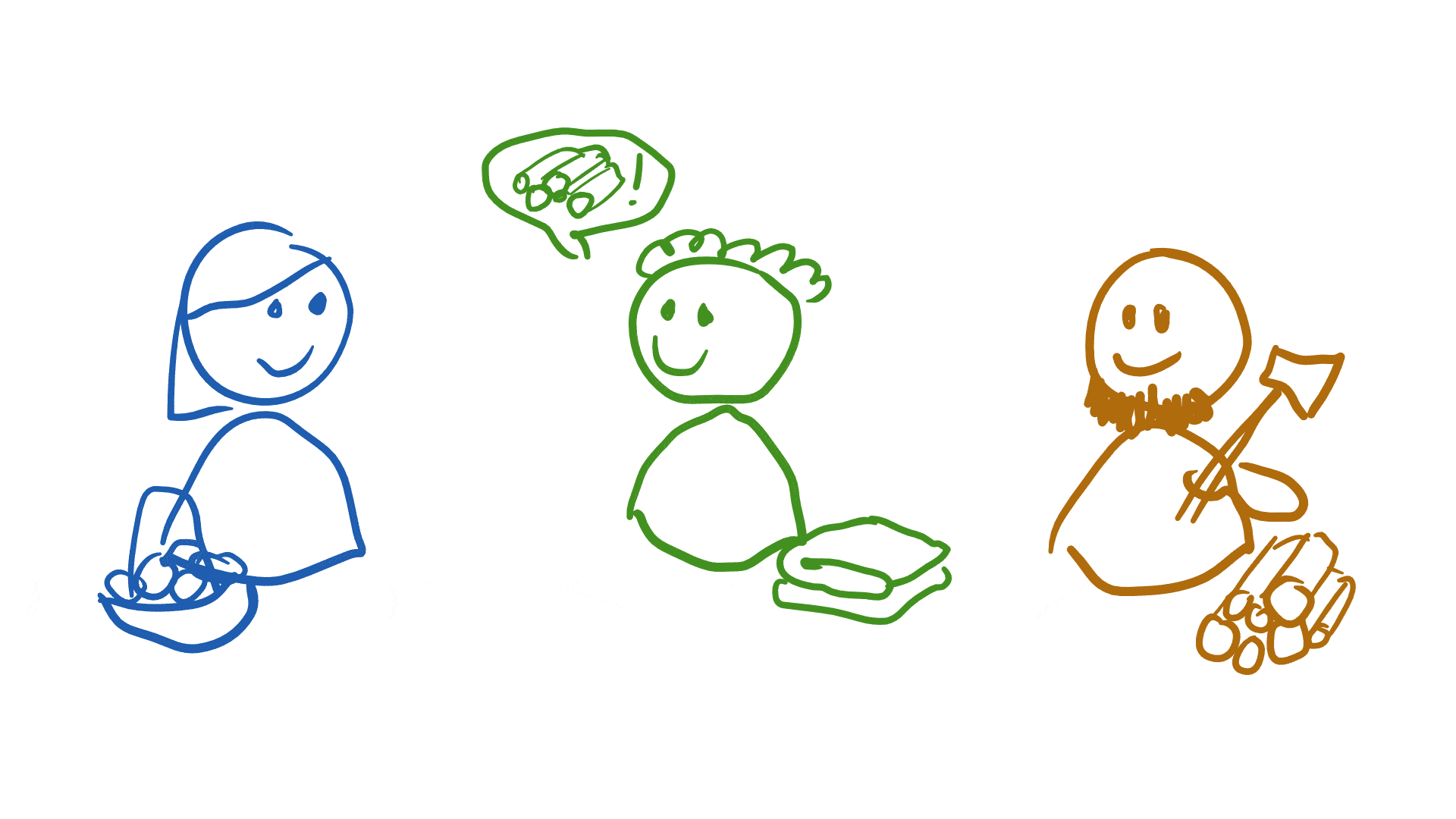
This is fine, but a bit limiting. Why does Bob have to be in the middle? He could promise Alice a blanket, she could exchange that promise for some firewood with Charlie, and Charlie could keep Bob's promise himself. Goods flow in one direction, with a promise to flow in the other direction until the debt is settled.
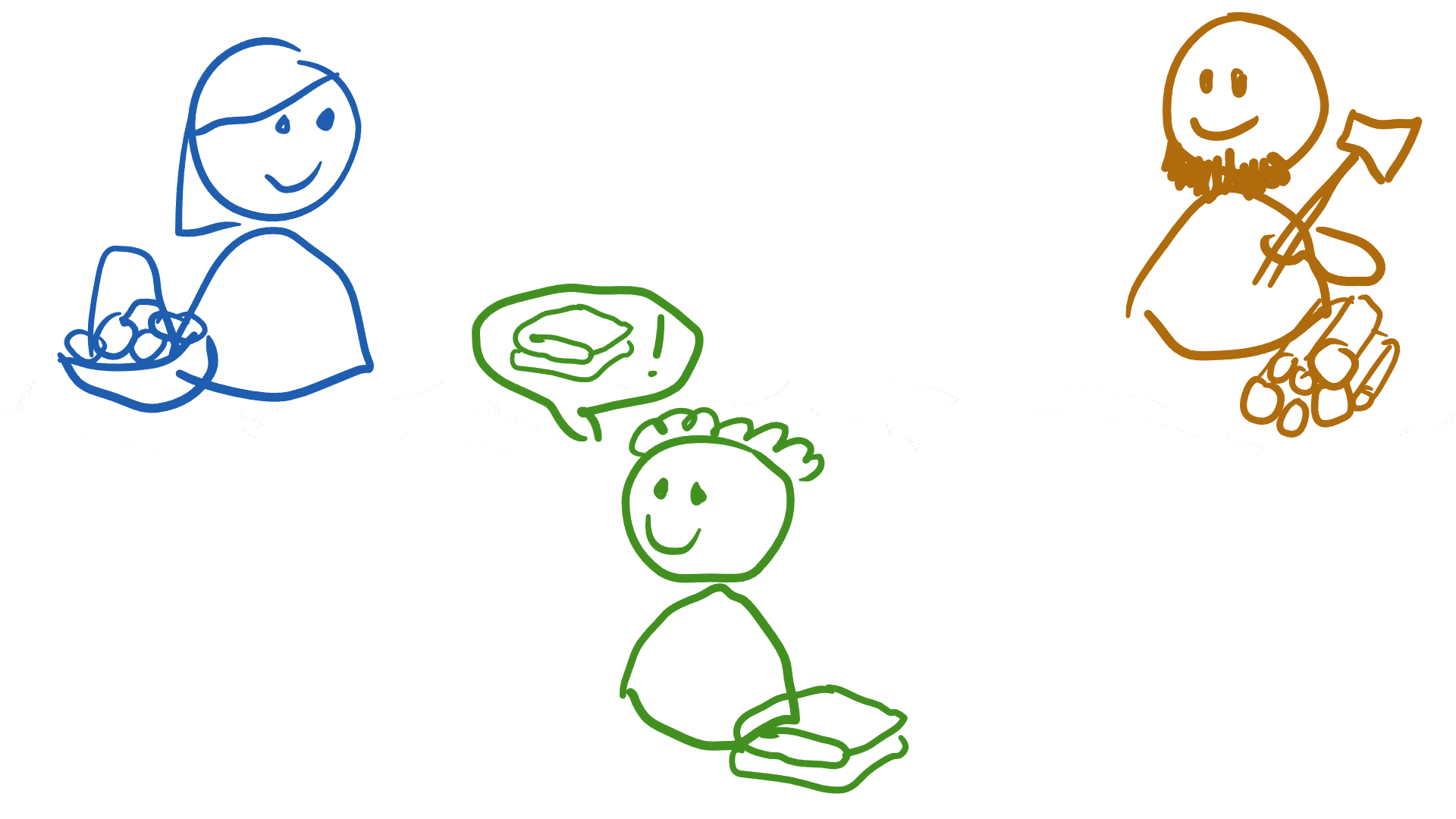
If you want, you can put these commitments on a piece of paper. This makes it easier for everyone to keep track of them. You can make them more general by associating their values with some kind of reference unit. Now you don't have to worry about how many eggs a blanket is worth, you can just price it in general units. Suddenly, the promises started to look a lot like... money. Bob dollars, if you're willing to name those commitments. (Also Alice dollars and Charlie dollars) Now we are moving towards creating a universal currency.
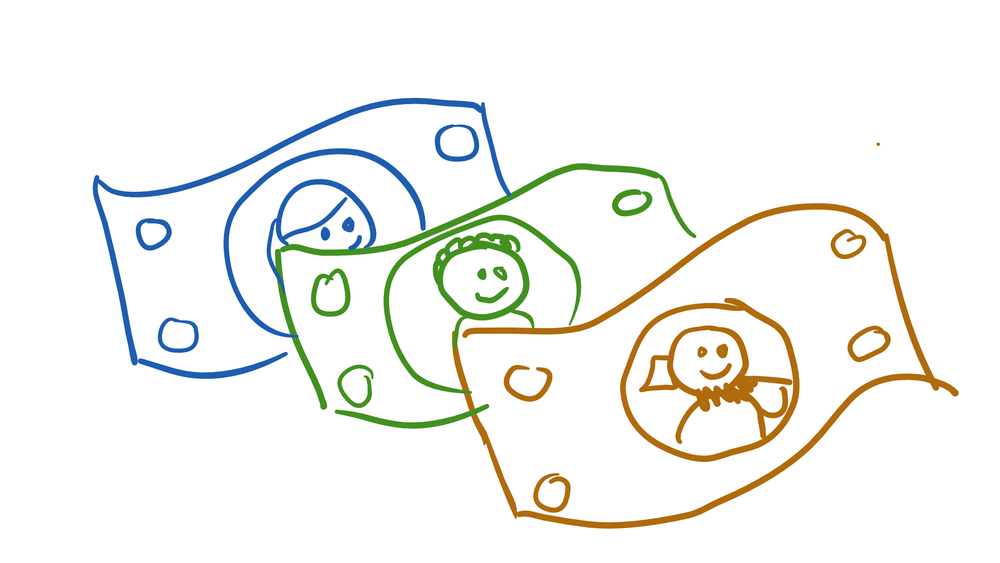
But here's the weird thing: since these promises are tradable, it doesn't make much sense to say that Bob has obligations to Alice. He is responsible for the entire economy. We can drop terms like "debtor" and "creditor" talking about personal relationships. This removes the danger of Bob falling into debt bondage with Alice. In addition, it spreads the cost of defaulting on commitments across the economy, rather than forcing Alice to take all the risk.
This is the foundation of mutual trust. In a typical real-world example, instead of circulating paper commitments, everyone has their own ledger to record all commitments made and received. It's really just massive multi-person double-entry bookkeeping. When Bob gives Alice a promise, he writes a negative number on his ledger and she records a positive number on hers. When Bob's promise is wiped, his promise is wiped.

Because for every promise made, a matching promise is received. So the net money supply on the ledger of all participants is always zero. However, the circulating money supply is equal to all unfulfilled promises.
But wait, is credit a good thing? Isn't that exactly how banks create money out of thin air?
It's a way.
I'm still trying to understand how banks work - I don't think I'm the only one trying to figure it out. It's too complicated, and it's probably intentionally too complicated. What I can understand is that when banks make loans, new money comes into circulation, and when those loans are repaid, the money in circulation disappears. And, like mutual credit, it happens through a series of borrowing and lending records on various ledgers.
In my opinion, this is the biggest difference. Under a bank-dominated credit system, banks have enormous power in creating and distributing money. And in the case of mutual trust, the whole economy gets involved. Every transaction is an agreement between two parties, whether it is creating, cashing, or destroying currency.
Another difference is that bank lending is interest-bearing, which I have never seen a common credit system do. Interest seems to create a vicious cycle of wealth loss, leading borrowers to borrow more money or withdraw wealth from elsewhere to pay rent on borrowed funds. Best to get out of this situation.
If designed well, mutual credit can help match the money supply with the economy. It "breathes" as goods and services are exchanged, expanding and contracting as commitments are made and settled. When Bob gives Charlie the blanket, the money is gone, no interest due, no runaway inflation or deflation. Money is no longer a thing, it's just a medium of exchange, a way to measure the flow of things that really matter to us.
When we say we want more money, maybe what we really mean is that we're stressed, we wish we could take better care of ourselves, and maybe even indulge in something good. Money is not the point, wealth is the point.
Is this safe? I know people whose commitments are not worth working with.
You're probably right; if people go around making promises that they can't keep, it can lead to consequences like inflation - too much promise and not enough real value to back it up. You might end up with a bunch of claims, but few to cash in.
There are a number of ways a currency can be devised to deter free food, with credit limits being the most popular. We will discuss these and other important design choices in later articles.
So, does this thing work? Does anyone actually do this?
certainly! There are many good examples of mutual trust in various places.
- LETS was founded by Michael Linton in the 1980s when the main employer in his small town went out of business. This is perhaps the original example of community mutual credit, and a model for many other examples around the world. LETSystems usually uses the federal currency as a unit. People tend to set up these institutions when they don't have enough "real" money to turn around.
- Timebanks are in the same vein as LETSystems' philosophy, but take people's time as a unit. This idea was invented by Teruko Mizushima in 1973 and further popularized by Edgar S Cahn. The root of the idea, he explained, was that funding for social programs had dried up. The time-based community currency received strong support from the United Nations in its 2000 Millennium Declaration report.
- Although not strictly mutual trust, Ripple is still a completely trust-based network, similar to Bob acting as a trusted middleman between Alice and Charlie. (The XRP cryptocurrency is only used to pay service fees to central intermediary nodes.)
- Sardex, a B2B mutual credit network based in Sardinia, Italy, was born out of the ashes of the 2008 credit default crisis, when the Sardinian economy fell into a deep depression. Sardex allows businesses to continue trading if they don't have enough euros, and has provided 2,900 businesses with €31.3 million in transactions over the past 11 years.
- Trade exchanges, which claim to be B2B barter networks, are not real barter at all. They just trust each other. IRTA, the International Reciprocal Trade Association, estimates that in 2019, 400,000 businesses were involved in $14 billion in trade exchange transactions.
rest
Here is the end of the first part. You learned about the evolution of money over five thousand years of history, and I'm proud of you. We started with the gift economy in the early days of human culture and evolved to the promise economy, and learned that in all our other monetary experiments, the promise economy never really went away. Finally, we explore mutual trust, a way to turn commitments into a common currency.
I'm excited about mutual credit because I see it as a bridge - compatible with our current economic practices, but doing business in a different way that might help us get out of the current recessionary, predatory Sexual, exploitative reality. .
Radical innovation in money deserves radical technology, so next week I'll introduce Holochain, a framework for building distributed applications, and explain how to use it to build mutual trust currencies. I think this is a near-perfect match; Holochain brings us closer to the ideal world of self-sovereign peer-to-peer interactions than client/server and blockchain. I think this is necessary for a free, people-driven, regenerative economy.
Photos used are from Vincent Botta's Unsplash post
Like my work?
Don't forget to support or like, so I know you are with me..
Comment…